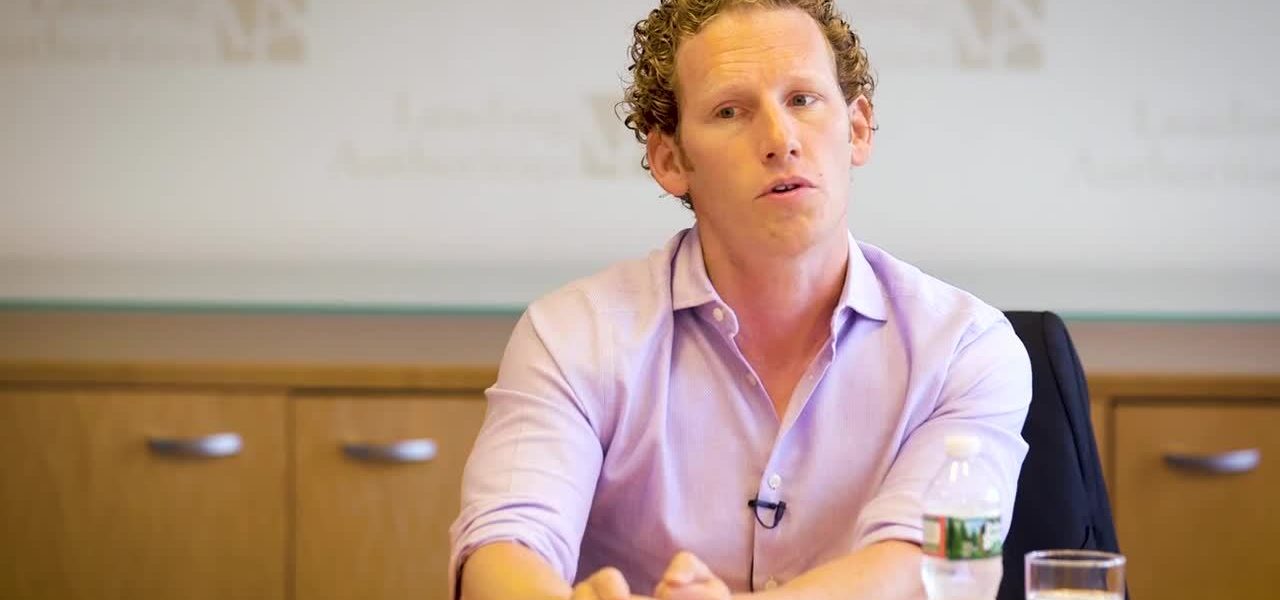What Makes Something Go Viral?
 We asked Jonah Berger to explain how things go viral. Here’s what he had to share:
We asked Jonah Berger to explain how things go viral. Here’s what he had to share:
Social media gurus always preach that no one talks about boring products or boring ideas. So you would think that more interesting products and brands get talked about more. Surprising, novel things get brought up more than mundane ones. Take Disney World and Honey Nut Cheerios. Disney World must get more word of mouth, right? Who in the world would talk about Cheerios?
Turns out lots of people. Conventional wisdom is wrong. Disney gets quite a bit of word of mouth, but Cheerios actually gets more. In fact, in a JCR paper analyzing how frequently almost 6,000 consumers talked about over 1200 products and brands, Raghu Iyengar and I found that in everyday offline communication, “boring” products and brands get talked about just as much as “interesting” ones. And the reason lies in something psychologists would call a trigger.
Start-ups live and die by word of mouth. Whether it’s a new website, a revolutionary recruiting service, or business to business play, at the beginning consumer awareness is always low. No one realizes you exist, so you have to get the word out. But most new ventures don’t have a big advertising budget. They have to grow organically. Get existing customers or fans bringing in new ones. One at a time.
Why, then, do some companies, products, and ideas get talked about more readily than others?
People often think getting word of mouth is like capturing lightning in a bottle. You have to get lucky. The market has to be just right. Or you need the right combination of 3 or 4 indescribable qualities that combine in some inexplicable way to create magic.
That’s a great theory. Except it’s completely wrong.
As I show in Contagious, there’s a science behind word of mouth. It’s not random and it’s not luck why people talk about some things rather than others. Just like behavioral economists have studied why people make certain choices, or statisticians have pulled out insights about human behavior from “Big Data,” researchers have been hard at work analyzing the human behavior behind out decisions to talk and share.
In one recent investigation, for example, my colleague and I looked at word of mouth data on almost 10,000 products and brands. Big brands like Coca-Cola and Walmart, to small start-ups. Everything from technology companies to services, from B2B to consumer package goods. In another project, we analyzed the virality of almost 7,000 pieces of online content. Everything from politics and international news to funny pieces, sports, and style.
But the focus of these studies wasn’t just documenting which products get talked about more, or what types of online content go viral. Rather, it was about understanding the whysbehind those outcomes. The underlying human behavior that drives some things to get talked about more than others and some things to go viral. How different emotions (e.g., sadness versus anger) shape what people share. How communicating online versus offline impacts whether people talk about what is top-of-mind. The psychology of talk. The science of social transmission.
Take Triggers. Disney is more interesting than Cheerios. It’s a really engaging emotional experience. But the problem is that people aren’t triggered to think about it very often. Sure, people talk a lot about the brand right after they go to one of the theme parks, but unless they’re reminded to think about that experience in the weeks and months that follow, they don’t keep bringing it up.
Cheerios is less interesting, but people eat breakfast once a day, 365 days a year. Even if they don’t buy Cheerios, they still see it once a week when they wheel their grocery cart through the cereal aisle. This makes Cheerios more top of mind more often, increasing the chances it gets mentioned. A product or idea might be really interesting, but if people aren’t triggered to think about it, they’ll never bring it up. Top-of-mind means tip-of-tongue.
Triggers are only one of the key word of mouth drivers my colleagues and I uncovered in our research. Again and again, I’ve seen the same six principles driving what people talk about and share. In Contagious: Why Things Catch On, I put these six principles into an acronym STEPPS, which stands for Social Currency, Triggers, Emotion, Public, Practical Value, and Stories).
Social Currency– Just like the car we drive and the clothes we wear, the things we say affect how people see us. So the more something makes someone look good, the more likely they’ll be to pass it on.
Triggers– If something is top-of-mind it will be tip-of-the-tongue. Just like peanut butter reminds us of jelly, the more we’re triggered to think about a product or idea, the more we’ll talk about it
Emotion– when we care, we share. Whether positive (excitement or humor) or negative (anger or anxiety), high arousal emotions drive us to share.
Public– People tend to imitate others. But as the phrase monkey see, monkey do attests, the easier it is to see what someone is doing, the easier it is to imitate. Public observability drives imitation (e.g., iPod’s white headphone’s).
Practical Value– People don’t just want to look good, they also want to help others. So more useful = more shared. Think articles about 10 ways to raise capital or 5 key negotiating tips.
Stories– No one wants to seem like a walking advertisement, but they will talk about something if it’s part of a broader narrative. So, build a “Trojan horse” story, a message that carries your brand along for the ride.
These six principles comprise a formula for getting more word of mouth. A recipe for crafting contagious content. For getting more people talking about any product or idea. And you can see how they interact with other consumer behavior phenomena. Looking at my own recent research in JCR, there are lots of paths to explore.
For example, in a paper this year, Silvia Bellezza and I studied the signaling phenomenon we term “trickle round”—some trends don’t trickle up in a straight line from street cred, through middle class clout, to elite prestige, but rather go from low-status consumers around to high-status consumers before moving back to middle-status consumers. How does this intersect with virality? Does a low-status trend, compared to a middle-status trend, drive more high-status consumer sharing? Conversely, do middle-status consumers look upward to see what is viral and what is worth sharing since it has a stamp of elite approval? In other words, do elite consumers look down and middle-status consumers look up?
Or, does the timing of WOM sharing matter? Colleagues and I recently found that compared to later in the day, people seek less variety in the morning, in part because they don’t want as much stimulation. Applied to word of mouth, might the same story be more or less likely to be shared based when in the day it is posted? And if so, is it due to a change in perceived practical value or emotions?
In the end, will following the STEPPS guarantee a viral hit? No. But it will increase the batting average. No one hits a home run every time, but by understanding the science of hitting, people can raise their average. Hitting more singles, doubles, and even home runs.
The same is true with word of mouth. By understanding the science behind why people talk and share, companies and organizations can get more word of mouth for their products and ideas. And help those products and ideas catch on along the way.
Jonah Berger is a Marketing professor at the Wharton School, and author of the New York Times bestseller Contagious: Why Things Catch On. Find his JCR articles here.




